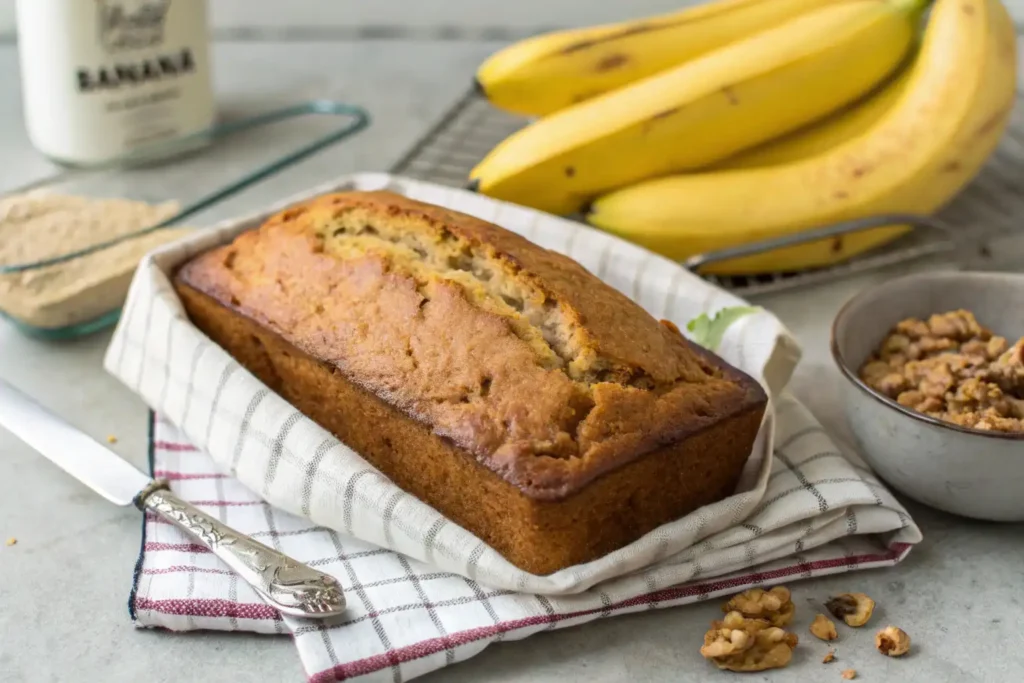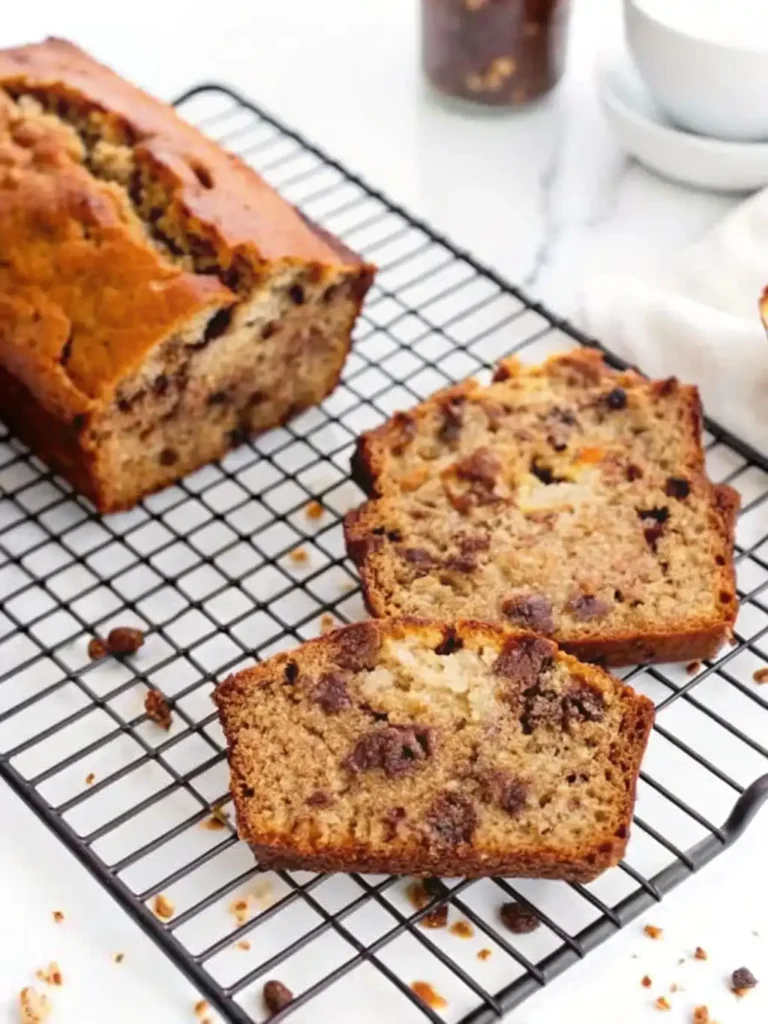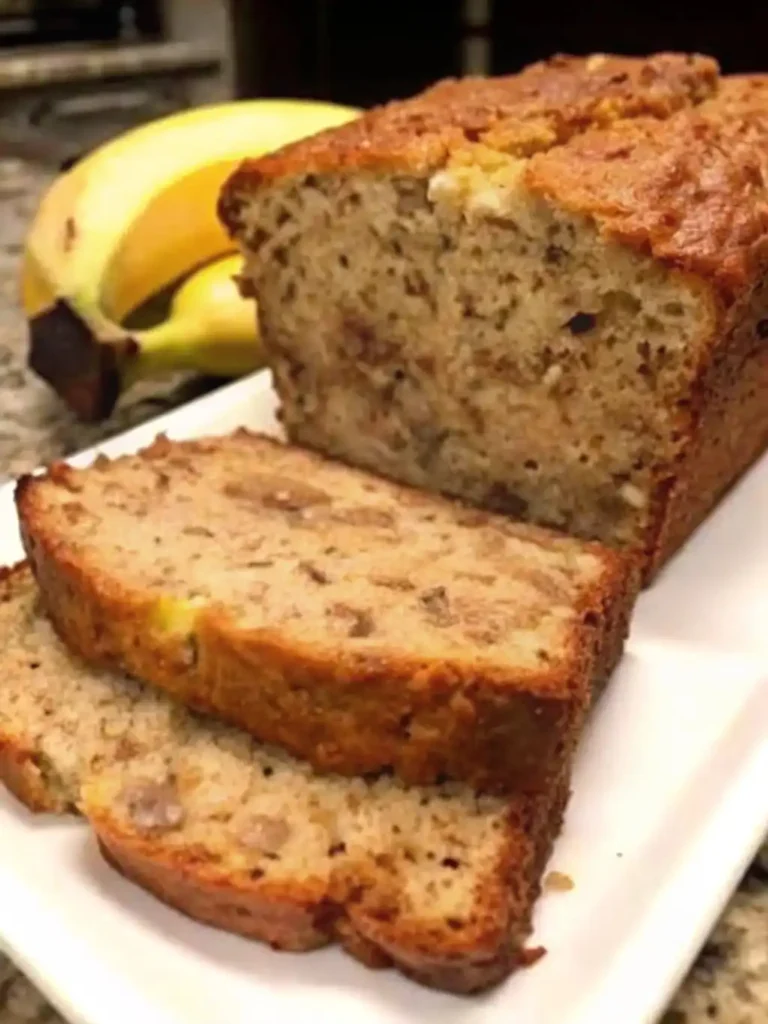When it comes to banana bread, a classic favorite in American kitchens, there’s often a debate: should you use baking soda or baking powder? If you’ve ever stared at both in your pantry wondering which one to grab, you’re not alone. Each brings something different to the table, and the choice can make or break your loaf. Let’s roll up our sleeves and dig into what makes these leavening agents tick and which one works best for banana bread.

Understanding the Role of Leavening Agents
Baking soda and baking powder are both leavening agents, which means they help your baked goods rise. But they work differently, and understanding their unique properties is the first step to nailing the perfect banana bread.
Baking Soda: The Power of Simplicity
Baking soda, also known as sodium bicarbonate, is a base. It needs an acid to activate it, creating carbon dioxide gas that makes your bread rise. Think of it like a bubbly science experiment happening in your mixing bowl.
Here are some common acidic ingredients that pair well with baking soda:
- Buttermilk: Adds a tangy flavor and moisture.
- Yogurt: A creamy option that keeps your bread tender.
- Brown sugar: Its molasses content acts as a mild acid.
- Bananas: Yep, those overripe bananas themselves are slightly acidic!
The kicker? Baking soda is powerful—just a little can go a long way. But too much can leave your bread with a bitter, soapy taste. (Trust me, I’ve been there, and it’s not great.)
Baking Powder: The All-In-One Hero
Baking powder is like baking soda’s overachieving cousin. It contains both an acid and a base, so it doesn’t need additional acidic ingredients to work. Most baking powders in the U.S. are double-acting, meaning they work in two stages:
- First, when mixed with liquid.
- Again, when exposed to heat in the oven.
This makes baking powder super forgiving for beginners, but it can also be a little less dynamic in flavor compared to baking soda.
The Science of Banana Bread
Banana bread is a moist, dense quick bread. It gets its signature flavor and texture from ripe bananas, which also act as a natural sweetener. Because of its density, banana bread doesn’t need to rise like a cake—it just needs enough lift to avoid being a brick. That’s where the right leavening agent comes in.
When to Use Baking Soda in Banana Bread

Baking soda shines when your recipe already includes acidic ingredients. For banana bread, this is often the case because of the bananas themselves. Using baking soda can:
- Create a tender crumb: The bubbles it produces help lighten the batter.
- Enhance browning: Baking soda raises the pH, encouraging a beautifully caramelized crust.
- Boost banana flavor: The higher pH can bring out banana’s natural sweetness.
However, since baking soda is so strong, recipes using it often need precise measurements. One teaspoon of baking soda is usually enough for every cup of acidic liquid.
When to Use Baking Powder in Banana Bread

If your banana bread recipe doesn’t include enough acid, baking powder is the better choice. It’s a no-fuss option because it doesn’t rely on acidic ingredients to do its job. Baking powder can:
- Provide consistent results: Especially if you’re experimenting with non-traditional ingredients, like almond milk or alternative flours.
- Ensure even rise: The double-acting process gives your bread a second lift in the oven, reducing the risk of a dense loaf.
The Case for Using Both
Here’s a little secret: some banana bread recipes call for both baking soda and baking powder. Why? Because combining them can balance the acidity and create the perfect rise.
For example:
- Baking soda might handle the acidity from the bananas and brown sugar.
- Baking powder gives an extra lift to ensure your loaf isn’t too dense.
This hybrid approach can give you the best of both worlds, especially if you’re working with a heavily customized recipe.
My Personal Banana Bread Journey
Let me tell you, I’ve made some tragic banana bread in my day. (One time, I forgot both baking soda and baking powder, and I ended up with a loaf that could double as a doorstop.) Over the years, I’ve experimented with countless recipes, tweaking the leavening agents to find that sweet spot.
One of my all-time favorite combinations is using 1 teaspoon of baking soda and ½ teaspoon of baking powder. It gives my banana bread a gentle rise while keeping it moist and rich. Plus, it helps avoid the dreaded “too sweet” or “too flat” flavor profile.
Tips for Perfect Banana Bread
If you’re still unsure which leavening agent to use, here are some tried-and-true tips:
1. Check Your Recipe
Does it include acidic ingredients like buttermilk, yogurt, or brown sugar? If yes, baking soda will likely do the trick. If not, go for baking powder or a mix of both.
2. Mind the Ratios
Too much leavening can cause your bread to rise quickly and then collapse. Stick to the measurements your recipe suggests, and resist the urge to eyeball it.
3. Rely on Ripe Bananas
The riper the bananas, the better the flavor—and the more natural acidity they bring to the table. Those brown, spotty bananas you’re about to toss? Perfect.
4. Don’t Overmix
Whether you’re using baking soda, baking powder, or both, overmixing can deflate your batter. Stir until just combined for the fluffiest results.
5. Test Your Leavening Agents
Baking soda and powder don’t last forever. Test freshness by adding a little to vinegar (for baking soda) or water (for baking powder). If it doesn’t fizz, it’s time to replace it.
Adjusting for Dietary Preferences
If you’re experimenting with dietary preferences, the choice between baking soda and baking powder becomes even more critical. For example, vegan banana bread often skips traditional acidic ingredients like buttermilk or yogurt. In these cases, baking powder tends to be the better choice since it doesn’t rely on acidity to activate. However, if you’re adding ingredients like apple cider vinegar or lemon juice as substitutes, baking soda can step in and perform beautifully. Remember, banana bread is all about balance, so don’t hesitate to tweak the ratios based on what’s in your pantry.
The Impact of Altitude on Leavening Agents
Here’s something many people overlook: altitude matters when baking. If you live in a high-altitude area, the air pressure affects how leavening agents work. Baking soda tends to be more predictable at high altitudes because its reaction occurs immediately when mixed with acidic ingredients. Baking powder, on the other hand, might cause over-rising, leading to a collapse in the oven. If you’re making banana bread in Denver or another high-altitude city, sticking with baking soda—or reducing the amount of baking powder—can help maintain the bread’s structure.
Experimenting with Add-Ins
Adding chocolate chips, nuts, or spices like cinnamon and nutmeg can change how your banana bread batter behaves. Denser batters with heavy add-ins might benefit from the extra lift that baking powder provides, especially if you’re using whole wheat flour or almond flour. On the flip side, baking soda helps keep those flavors pronounced by enhancing browning and bringing out the sweetness of bananas and other mix-ins. If you’re going heavy on extras, consider blending a touch of both for the best results.
Storing and Freezing Banana Bread
Once your perfect banana bread is out of the oven, knowing how to store it ensures you enjoy every slice. Whether you used baking soda, baking powder, or both, proper storage can preserve that tender crumb and moist texture. Wrap your loaf tightly in plastic wrap and store it at room temperature for up to three days. If you’re freezing it, allow the bread to cool completely before wrapping and placing it in an airtight container. And here’s a pro tip: reheat a frozen slice in the microwave for 20 seconds—it’ll taste just as fresh as the day you baked it.
FAQs
Should I Use Baking Powder or Baking Soda in Banana Bread?
The choice between baking powder and baking soda depends on your recipe. If your banana bread contains acidic ingredients like buttermilk, yogurt, or ripe bananas, baking soda is ideal because it reacts with the acid to produce a light and airy texture. If there’s no acid in your recipe, baking powder is a better option since it doesn’t need an acid to activate.
Which Is Better for Bread, Baking Soda or Baking Powder?
Neither is universally “better” for all breads—it depends on the type of bread and its ingredients. For quick breads like banana bread, baking soda works well when acidic elements are present, while baking powder is more versatile if the recipe lacks acidity. For yeast-based breads, neither is typically used, as yeast provides the rise.
Does It Matter If I Use Baking Powder or Baking Soda?
Yes, it does matter! Baking soda and baking powder aren’t interchangeable because they react differently in recipes. Baking soda needs an acid to activate, while baking powder already contains its own acid and works with any liquid. Swapping one for the other without adjusting the recipe can lead to flat, dense, or bitter results.
Is Baking Soda or Baking Powder Better in Banana Bread Reddit?
Reddit users often agree that baking soda is the go-to choice for banana bread because bananas and other typical ingredients like brown sugar naturally provide the acidity needed for it to work. However, many also suggest using a combination of both baking soda and baking powder for a well-rounded rise and texture.
The Final Verdict: Baking Soda vs. Baking Powder
So, which is better for banana bread? The answer depends on your recipe and personal taste. If your recipe includes acidic ingredients, baking soda can elevate your loaf to greatness (oops, did I say “elevate”?). If you’re going rogue with non-traditional ingredients, baking powder is a safer bet. And if you’re looking for perfection, consider combining both for a balanced rise and flavor.
At the end of the day, banana bread is about comfort and nostalgia—whether you like it dense and fudgy or light and cakey. So, grab those bananas, choose your leavening agent, and get baking. Your kitchen is about to smell amazing.



1 thought on “Is Baking Soda or Powder Better for Banana Bread?”